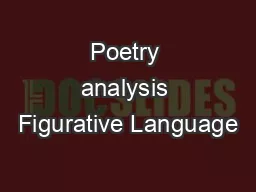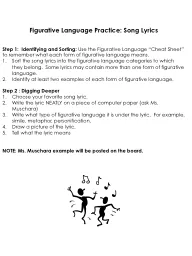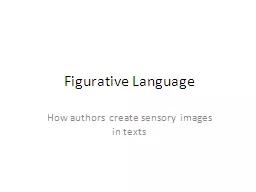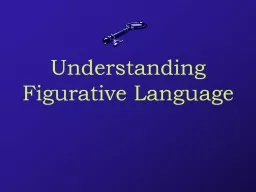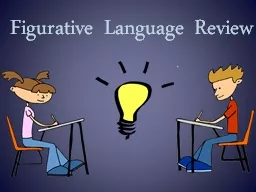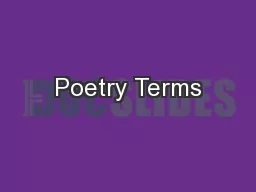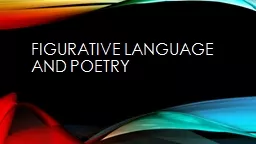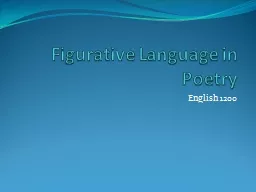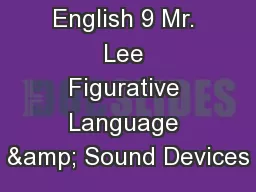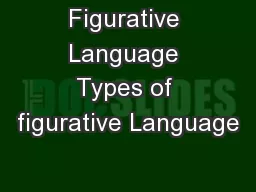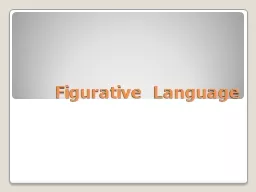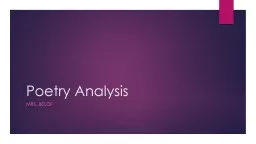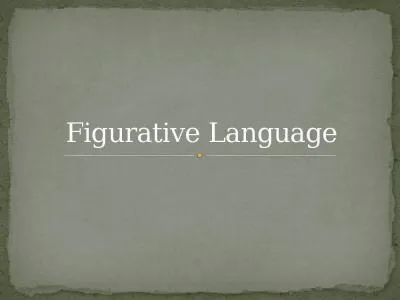PPT-Poetry analysis Figurative Language
Author : tatyana-admore | Published Date : 2018-03-10
Painting your writing with words What is figurative language Figurative language expresses an idea that goes beyond the actual meaning of the words Wind cant whisperbut
Presentation Embed Code
Download Presentation
Download Presentation The PPT/PDF document "Poetry analysis Figurative Language" is the property of its rightful owner. Permission is granted to download and print the materials on this website for personal, non-commercial use only, and to display it on your personal computer provided you do not modify the materials and that you retain all copyright notices contained in the materials. By downloading content from our website, you accept the terms of this agreement.
Poetry analysis Figurative Language: Transcript
Download Rules Of Document
"Poetry analysis Figurative Language"The content belongs to its owner. You may download and print it for personal use, without modification, and keep all copyright notices. By downloading, you agree to these terms.
Related Documents

